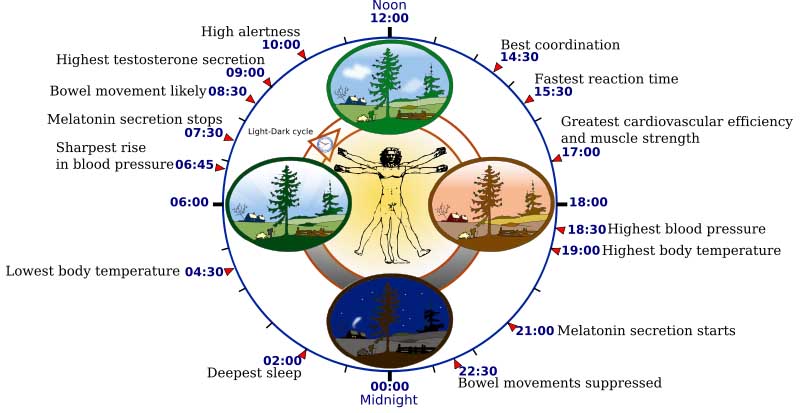

Biorhythm measurements are an attempt to predict various aspects of a person's life through simple mathematical cycles. The notion has no more predictive power than chance, and is now considered a classic example of pseudoscience by modern science.
According to believers in biorhythms, a person's life is affected by rhythmic biological cycles which affect one's ability in various domains, such as mental, physical, and emotional activity. These cycles begin at birth and oscillate in a steady sine wave fashion throughout life; thus, by modeling them mathematically, a person's level of ability in each of these domains can be predicted from day to day.
Most biorhythm models use three cycles: a 23-day "physical" cycle, a 28-day "emotional" cycle, and a 33-day "intellectual" cycle. Although the 28-day cycle is the same length as the average woman's menstrual cycle and was originally described as a "female" cycle, the two are not necessarily in any particular synchronization. Each of these cycles varies between high and low extremes sinusoidally, with days where the cycle crosses the zero line described as "critical days" of greater risk or uncertainty.
In addition to the three popular cycles, various other cycles have been proposed, based on linear combination of the three, or on longer or shorter rhythms.[
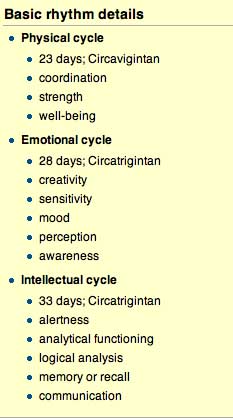
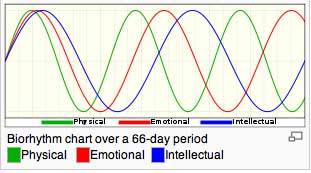
Physical:

This cycle effects the physical aspect of the body. It encompasses your energy levels, your resistance, and your overall physical strength and endurance. During the positive half of cycle is when you will feel at your best. This cycles influences physical factors such as eye-hand coordination, strength, endurance, and resistance to disease.
(Peak) You will feel physically fit to work on projects requiring physical strength and endurance. (Low) During the down half of cycle you are likely to have less energy and less vitality. Be sure to follow this cycle if you require physical endurance for either sports or your work.
Emotional

This cycle governs the nervous system and also is referred to as the sensitivity rhythm. This cycle influences our emotional states, affecting love/hate, optimism/pessimism, passion/coldness, depression/elation. (Peak) When you are feeling most creative, most loving and warm, and you are probably more open in your relationships. (Low) More inclined to be withdrawn and less cooperative. You may also be very irritated and negative about those things that occur in your everyday life.
Intellectual

This cycle supposedly originates in the brain. It influences our memory, alertness, speed of learning, reasoning ability, accuracy of computation.(Peak) Considered to be at your most intellectually responsive; you're open to accepting and understanding new ideas, theories and approaches. (Low) Much more likely to have difficulty in grasping new ideas and concepts.
Compassion (38 days)
Aesthetic (43 days)
Self- Awareness (48 days)
Spiritual (53 days)
These cycles start the moment we are born. They are at a mid-point at that time. They then go up and down at different rates over our lifetimes. When any of the cycles are at a high point, things we do that require aspects of that trait are more successful - the reverse is true during the low points of a cycle. Many people report that they can improve the quality of their lives by monitoring their biorhythms and acting accordingly.
All three cycles go through positive (ascending) and negative (descending) phases. The days on which a cycle passes from positive to negative or vice versa are known as "critical" days.
There are three critical days in each cycle, and it has been proved statistically that more accidents happen on these days than at any other point in the cycle.
As long as 3000 years ago, the scientists of ancient Greece were recording the regular rhythms of basic bodily functions such as respiration, kidney activity, pulse rate and, of course, the female menstrual cycle. Most of us barely give them a thought; yet these rhythmic cycles affect even the tiniest cells of our organism from the day we are born to the day we die.
Hippocrates, the celebrated Greek physician, noticed that good and bad days fluctuated cyclically in both sick and healthy people. It was only relatively recently, however, that the theory of three internal cycles with a definite effect on behavior patterns gained credibility in our society, and its practical use was appreciated by many people in all walks of life.
In modern times we think of the 'fathers of biorhythm theory as Dr. Wilhem Fliess and Hermanna Swoboda.
A German physician in Berlin, Wilhem Fliess, provided the first tentative explanation for this phenomenon, on the basis of physiological and emotional cycles.
Later an Austrian physician, Prof. Alfred Telcher, further developed the theory identifying a third component, the intellectual cycle.
Hermanna Swoboda was a professor of psychology at the University of Vienna. Dr. Wilhelm Fliess was a nose and throat specialist in Berlin. Like so many important scientific discoveries, both Fliess and Swoboda were working along very similar lines with almost no knowledge of each other's work. It is quite extraordinary that these two scientists, despite doing independent research, came to virtually identical conclusions.
Both Swoboda and Fliess found psychology intriguing and due to books and information beginning to surface at the time, took an interest in human cycles. Swoboda published this paper at the Universal of Vienna in 1900 - "Life is subject to consistent changes. This understanding does not refer to changes in our destiny or to changes that take place in the course of life. Even if someone lived a life entirely free of outside forces, of anything that could alter his mental and physical state, still his life would not be identical from day to day. The best of physical health does not prevent us from feeling ill sometimes, or less happy then usual."
Analyzing dreams, ideas and creative impulses of his patients, Swoboda noticed very regular patters or rhythms. Some artists might be familiar with these dry spells and then frenzies of creations with predictable variations. He also observed that new mothers began to show anxiety about their infants whenever a critical day occurred or was about to occur.
Swoboda's discovery of these two basic biorhythms led him to write a succession of distinguished and widely-popular books explaining and developing the ideas of human cycles. First of these books, published in 1904, is titled The Periods of Human Life (in their psychological and biological significance). His second book titled Studies on the Basis of Psychology further elaborated his work on creativity and the recurrence of dreams. In 1909 he published an instruction booklet which included a slide rule to calculate critical days called, The Critical Days of Man.
Swoboda's best book, and one of his last, was a volume of almost 600 pages titled The Year of Seven. Much of that work was devoted to proving biorhythm theory by giving a mathematical analysis of how the timing of births tends to be rhythmic and predictable from generation to generation within the same family.
Wilhelm Fliess on the other hand did not get nearly as much gratification from his discovery as Swoboda. He did introduce Sigmund Freud, a friend of his, to Biorhythms around the turn of the century. Freud, well known as the father of modern psychology, was very interested in human behavior and was fascinated by Fliess's work. During the course of five years they wrote over a hundred letters to each other discussing their respective discoveries and research.
Both Fliess and Freud were interested in human bisexuality. Fliess begun to prove cellular bisexuality through his research of Biorhythms realizing that both men and women had an emotional cycle that was the same. He stated that Women are more influenced by the emotional cycle and men are more affected by the physical cycle.
He concluded, due to cellular bisexuality both male and females have both rhythms (saying that men have a pseudo menstrual cycle, if you will). In 1909, Fliess published a book entitled The Course of Life, which spurred other doctor, Hans Schlieper, to write a book on Biorhythms called The Year in Space.

Throughout the ages humans have been intrigued by the effect of the sun, moon, and stars on their daily lives. The day-night cycle and seasonal changes have been the fountainhead of religious beliefs and scientific inquiry as long as humans have inhabited the earth. Only recently have we attained a deeper understanding of biological rhythms (or biorhythms) that regulate human existence.
We now know that the pineal gland, in addition to being an independent pacesetter and timekeeper, is a photosensitive organ, interpreting sensory messages from the retina. It translates environmental messages of the light-dark cycle of day and night and seasonal changes into hormonal messages sent throughout the body.
This results in an internal daily biorhythm called the circadian rhythm. The length of time it takes to complete a single cycle of the circadian rhythm is referred to as the period of the rhythm and is usually a full day. Secretion of melatonin by the pineal reaches a peak during the night. This is one way that the pineal communicates with other organs and acts as the body's daily timekeeper.
We are now learning that they include your intuitive or psychic cycle. This 38 day rhythm cycle coincides with Plato's "four aspects" and with Carl Jung's "four functions". Jung, the world famous psychologist and teacher, described the four functions as sensation, thinking, feeling and intuition. These four functions directly relate to your regular four biorhythm cycles of physical, intellectual, emotional and intuitional and they all work together to regulate your physical and mental abilities and well being.
The 4th cycle controls subconscious perception, hunches, instinct and your 'sixth sense'. If you're interested in any field that relies upon your subconscious abilities, whether they be telepathy, healing at a distance, radionics, dowsing, strengthening psychic ability, healing yourself or simply 'mind control'.
Alzheimer's May Hijack Your Cells' Clocks, Hinting at New Treatments Science Alert - November 11, 2025
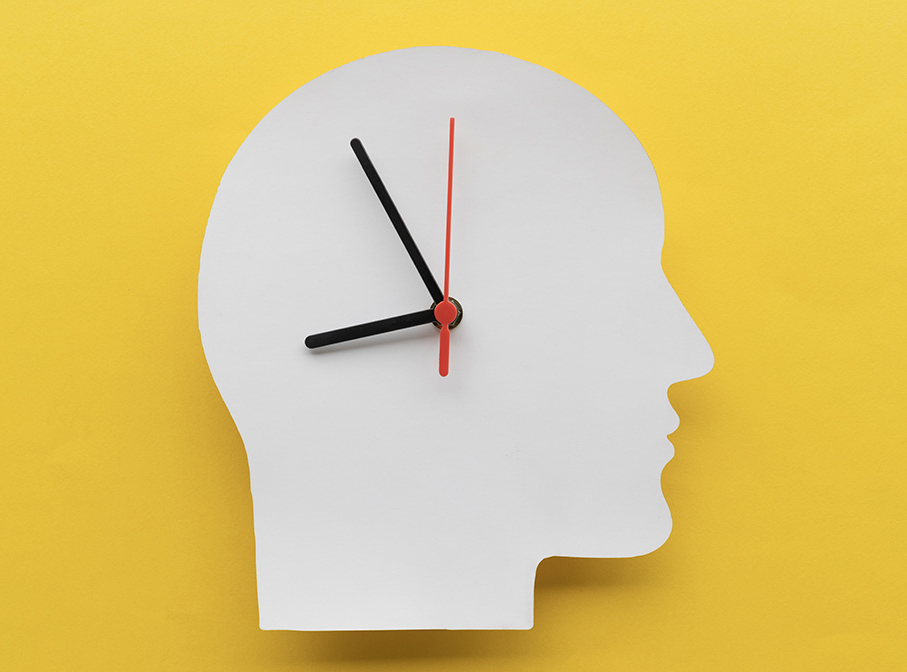
The daily rhythm of genetic activity varies between individual cell types in ways that depend on their states of health, a recent study has found, revealing details on the relationship between Alzheimer's disease and our brain's operational routine.This cycle is known as the circadian rhythm.
Light Has The Power to Shift Your Mental Health. Here's How. Science Alert - November 3, 2024
Light shining on the back of the eye sends "timing signals" to the brain and the master clock of the circadian system. This clock coordinates our daily (circadian) rhythms. "Clock genes" also regulate circadian rhythms. These genes control the timing of when many other genes turn on and off during the 24-hour, light-dark cycle. But how is this all linked with our mood and mental health? Circadian rhythms can be disrupted. This can happen if there are problems with how the body clock develops or functions, or if someone is routinely exposed to bright light at night. When circadian disruption happens, it increases the risk of certain mental disorders. These include bipolar disorder and atypical depression (a type of depression when someone is extra sleepy and has problems with their energy and metabolism).
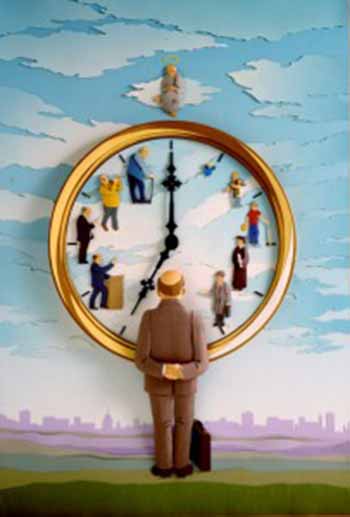
Biological Clock - Circadian Rhythm